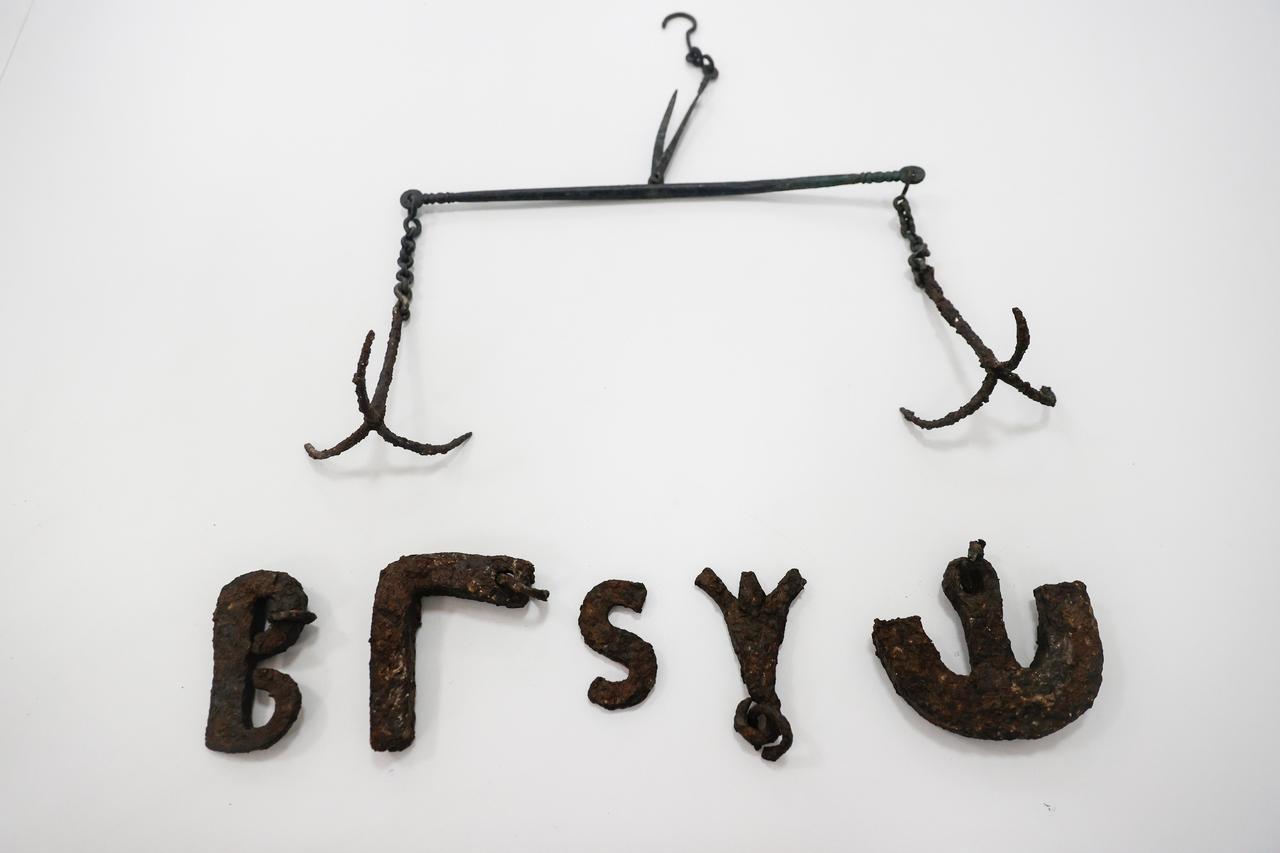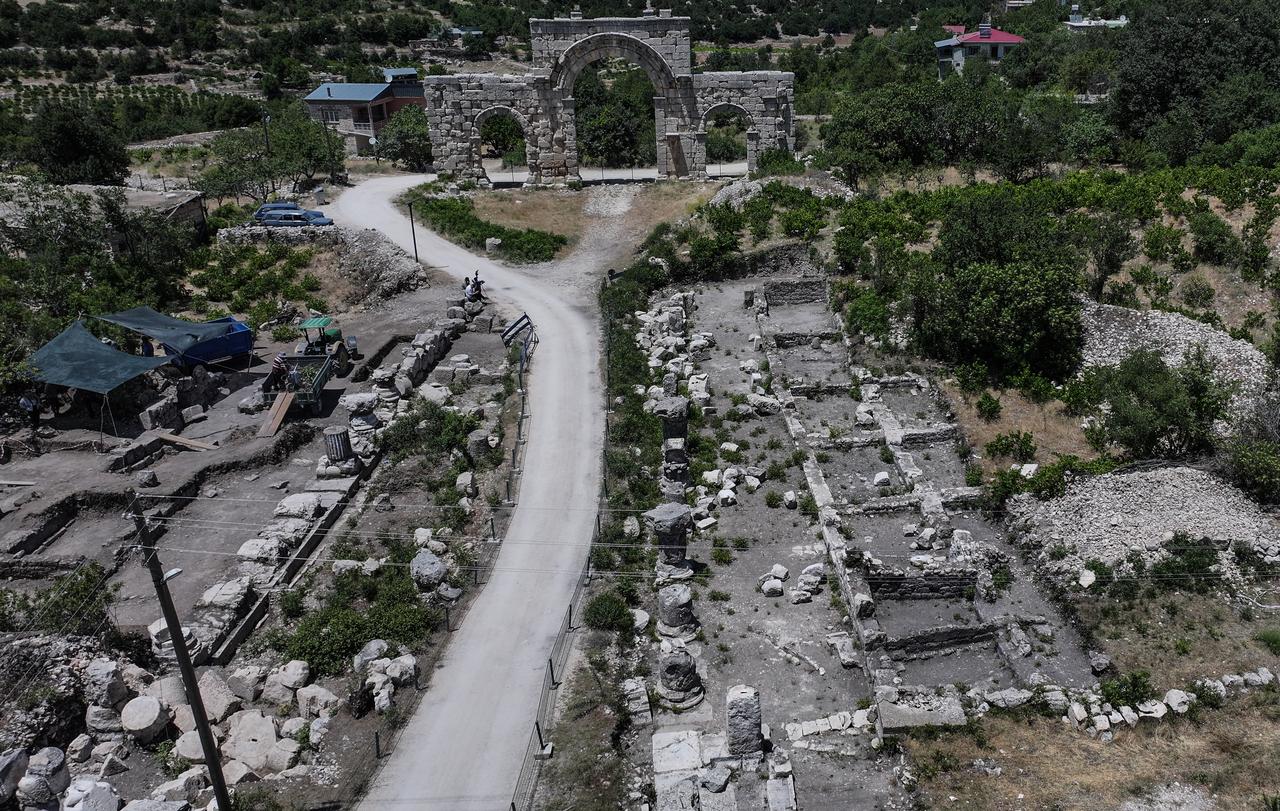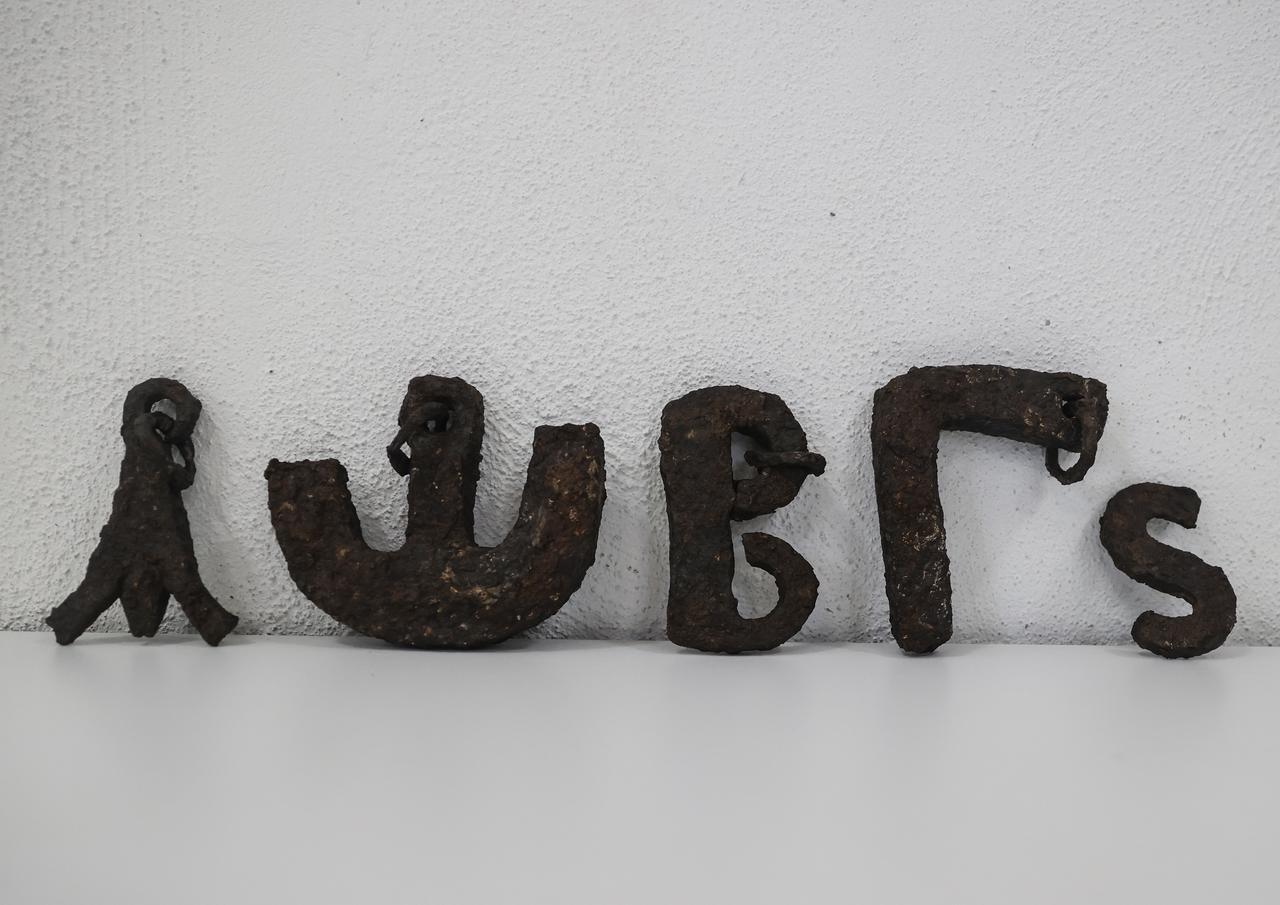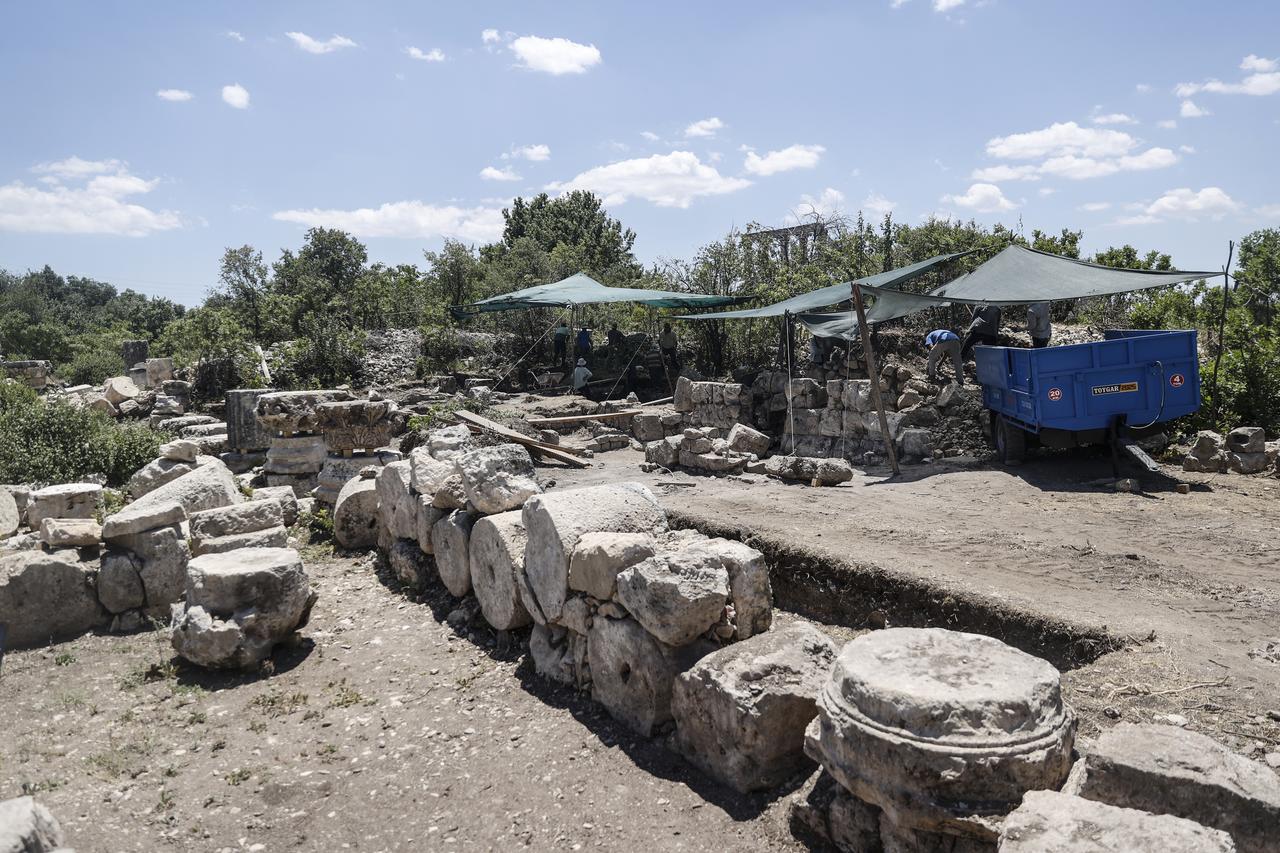
Archaeologists have unearthed a rare set of iron weights shaped like Greek letters along with a complete balance scale, believed to be around 1,600 years old, during excavations at Uzuncaburc, a well-preserved ancient city in southern Türkiye’s Mersin province.

The discovery was made during ongoing archaeological work led by Mersin University in collaboration with Türkiye’s Ministry of Culture and Tourism. The excavations are part of the “Heritage for the Future Project,” a nationwide initiative aimed at preserving and promoting cultural heritage.
Located 30 kilometers north of Silifke district, Uzuncaburc is known for its monumental remains from the Hellenistic and Roman periods, including columned streets, temples, monumental fountains, and a theatre.
This season’s focus was on the city’s two main columned avenues, where teams uncovered multiple ancient shops and commercial structures. It was in one of these that a complete Roman-era balance scale and five accompanying weights were found.

The iron weights, each made in the shape of a letter from the ancient Greek alphabet, are thought to date back to the Late Antique period—between the 4th and 7th centuries AD. According to excavation director Professor Umit Aydinoglu, the weights correspond to a standardized unit called “litra” and range from half to five litrae, equivalent to approximately 150 grams to 1.5 kilograms today.
“These types of iron hanging balance scales were widely used during Late Antiquity,” Aydinoglu said. “What makes this find particularly remarkable is that the full set has been recovered together, and the weights are in letter shapes, each representing a different value. It’s the first time we’ve uncovered a complete measuring system like this.”

Aydinoglu explained that the presence of coins, cutting tools, and shop structures in the vicinity reinforces the importance of these streets as commercial hubs in antiquity. The team believes that these streets formed the main economic artery of the city.
They also hope to restore several of the shops and continue revealing the full layout of the city’s urban infrastructure. Aydinoglu added that the team had recently completed landscaping around the site, including walking paths and signage, to make the area more accessible to visitors.
“In a few years, Uzuncaburc will become one of Türkiye’s most recognized archaeological village models,” he said.